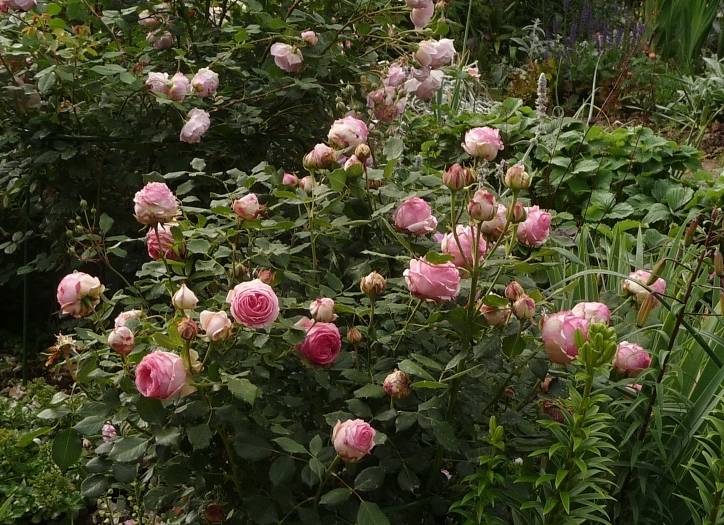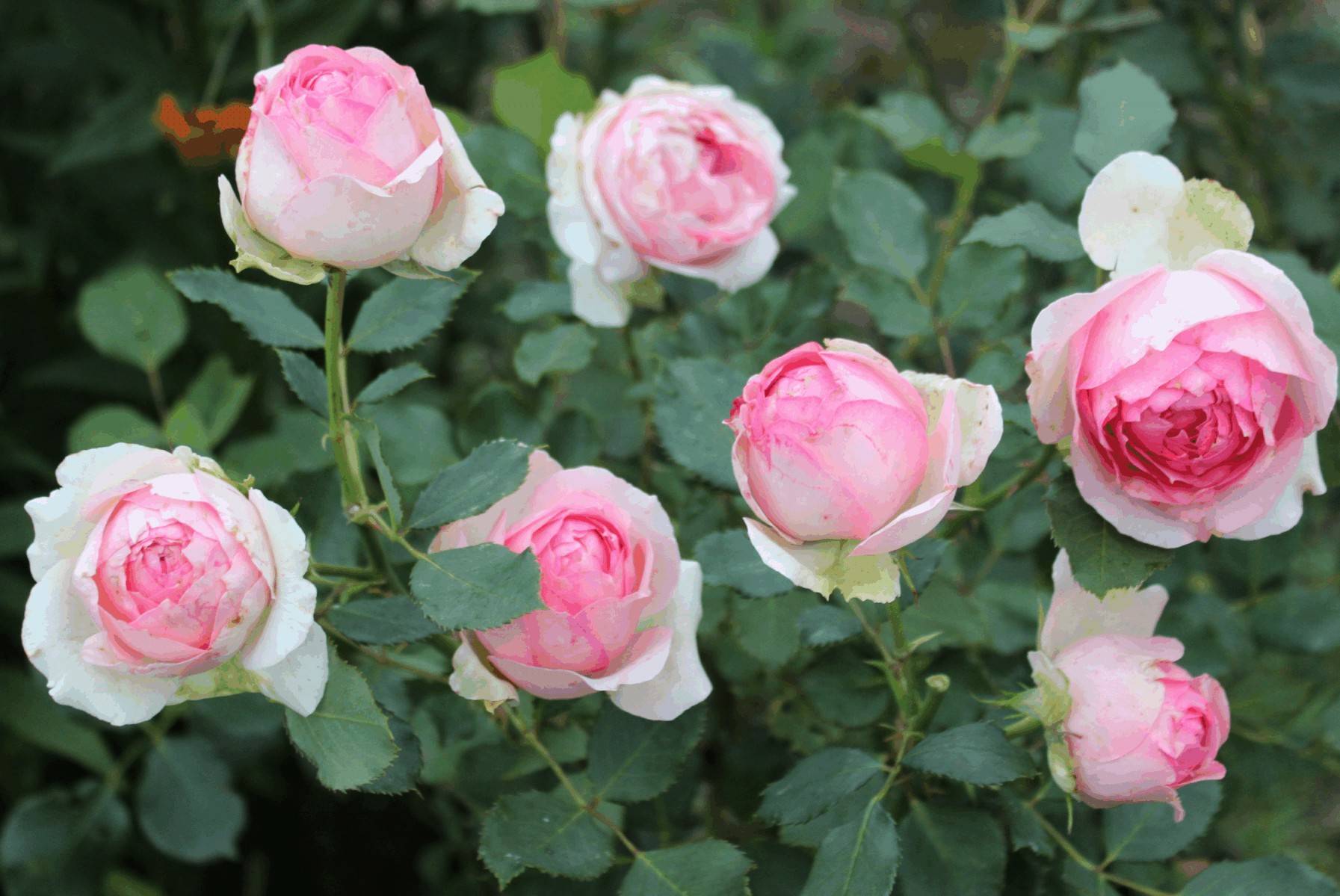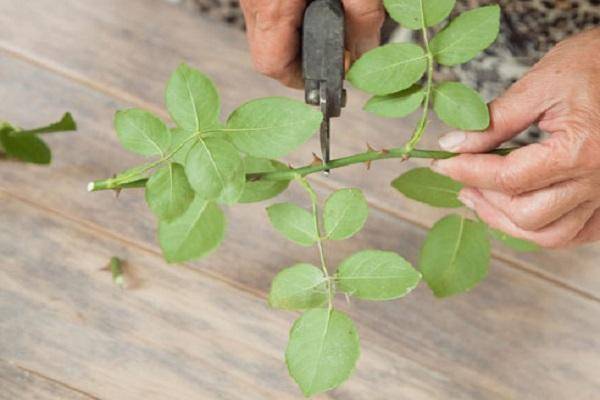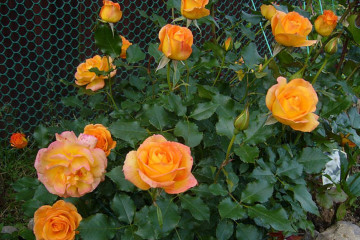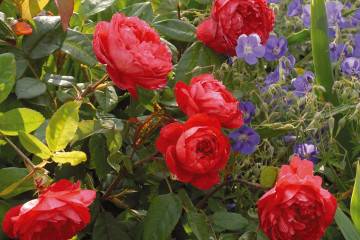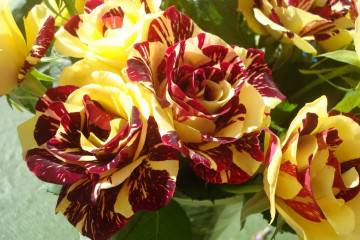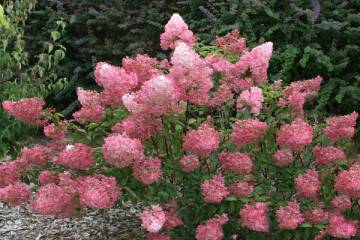Rose First Lady (First Lady) - characteristics and description of the variety
Content:
First Lady is one of the most beautiful varieties of hybrid tea roses. Dense pink buds delight with their spectacular appearance. The culture is used for landscaping the site. Stems with flowers can be cut and decorated with them in the room. Below is information on growing the First Lady scrub rose in the local area.
Rose First Lady - what is this variety
The plant was bred by German specialists in 2005. The breeding work was carried out in the Tantau nursery.
Description and characteristics
A rose called First Lady is a shrub up to 1.5 m high and up to 1.2 m wide. On the shoots dense double flowers with a diameter of about 10 cm grow. In the center of the bud, the petals are painted in a deep pink color. The edges are lighter, almost white.
Up to 3 buds on one stem. Flowers bloom slowly. They are highly decorative without fading under the scorching sun. The bushes grow quickly, so a spacious place is selected for them.
Advantages and disadvantages of the variety
The positive qualities of a Lady include the following characteristics:
- decorative look;
- re-flowering;
- use as a cutting plant;
- good immunity;
- winter hardiness.
Negative qualities include the need for bushes in the presence of a large area.
Use in landscape design
Rose First Lady looks beautiful as a tapeworm. Single planted bushes can be viewed from all sides. A green lawn will serve as a background for the culture. The rose can also be planted against the backdrop of tall trees and shrubs.
Growing a flower
Bushes are purchased in a garden center or in a plant nursery. Flower growers usually do not grow a crop with seeds because of their laboriousness. In addition, all the qualities stated in the description may not be transmitted.
They plant a rose on the plot with seedlings. Bushes should not be older than 1-2 years, otherwise they will take a long time to take root. Best if grown in a container. In this case, the bushes will be replanted without destroying the earthen coma.
Seat selection
The rose is planted in a well-lit place. Bushes should not be placed too close to other plants. With a thickened planting, infection with fungal diseases can occur. Groundwater should not be too close to the ground surface.
How to choose soil and flower for planting
The substrate is selected fertile, loose. Good First Lady rose will thrive in loam. There should not be too much sand in the soil. Otherwise, moisture will leave the substrate too quickly.
Seedlings are chosen healthy, without signs of diseases. The root system is dipped in a potassium permanganate solution for several hours. This is necessary for the disinfection of the seedlings. Shoots and root system are slightly pruned before planting.
Planting procedure step by step
Prepared roses are planted as follows:
- Dig a hole 60 cm deep and wide.
- A drainage layer is placed on the bottom.
- Then a 10-centimeter layer of compost or rotted manure is laid out.
- Pour garden soil.
- They put the seedling in the center of the hole, straighten the roots and cover them with soil.
- The earth is lightly tamped, watered abundantly.
- The trunk circle is mulched with peat.
Plant care
Caring for a rose consists in watering, feeding, loosening the earth. Faded buds are cut off. This contributes to an increase in the decorativeness of the bushes, the growth of new buds.
Watering rules and humidity
The bushes are rarely watered, but abundantly. Each adult plant requires at least 15-20 liters of water. To avoid the appearance of diseases and pests, the rose is not irrigated from above. The water is used warm and settled.
In dry hot weather, flowers are watered once a week. Mulching the trunk circle will help preserve moisture in the soil. In the fall, water-charging irrigation is carried out.
Top dressing and soil quality
In the spring, with the onset of warmth, the rose is fed with nitrogen. The substance gives impetus to the growth of shoots and the root system. Before flowering, a complex mineral fertilizer is applied with an advantage in the composition of potassium and phosphorus.
In autumn, the bushes are fed with potassium, which contributes to the successful wintering of flowers. Only being in fertile soil, the rose will be able to show itself in all its glory.
Pruning and replanting
During the growing season, sanitary pruning is carried out. It is necessary to prevent the onset of disease. Full pruning is done in the spring. Shoots are cut to 2-4 or 5-7 buds.
Roses are transplanted in spring or autumn by transshipment without breaking an earthen coma.
Features of wintering a flower
Preparation for wintering begins with the introduction of potash fertilizers into the near-trunk circle. At the same time, the bushes cease to water abundantly, to loosen the ground. When stable frosts come, they spud the rose. If severe frosts are expected, the shoots are bent to the ground, covered with spruce branches, wrapped in non-woven material.
Blooming rose
Fest Lady rose grows beautiful buds. They contain a large number of rose petals. Each bud blooms within a week. But, if there is cool, rainy weather for a long time, the flower may not bloom.
To maintain the decorative effect of the bushes, dry, unblown buds are cut off. If the rose does not bloom, it is possible that the gardener is doing wrong agronomic techniques. By adjusting the care scheme, you can achieve long, abundant flowering.
Flower propagation
The rose is propagated on the site in several ways, the most popular of which is cuttings of semi-lignified shoots. Cut them before budding or after flowering. The breeding procedure is carried out as follows:
- Cut the cuttings with 2-3 leaves.
- Put in a root stimulator for several hours.
- Plant the cuttings at an angle in light soil.
- Cover with a transparent film.
- They are placed in a warm place.
When roots begin to form, the shelter is removed. The grown bushes are planted in a permanent place after a year.
Another way to propagate the First Lady is by layering. For this, grooves are dug into which the stems are laid, without separating them from the mother plant. They are attached to the ground with staples, watered, covered with a substrate.
After a while, roots will appear on the shoots. After about a year, young bushes are separated from the parent bush, planted on the site.
Diseases and pests
The First Lady has good immunity, but with improper care, the bush can be affected by root rot and powdery mildew. Diseases appear with frequent and abundant watering, as well as with upper irrigation of the bushes with cold water. Antifungal drugs are used to treat plants.
The main pest of roses is aphids. The insect sucks juice from the leaves, which weakens the culture. Another possible pest is spider mites. Insects are eliminated by spraying with insecticides.
Rose First Lady is a spectacular, beautifully flowering plant. She does not require special care for herself. It is enough to carry out the usual agrotechnical measures for growing roses. Subject to the rules of planting and care, the gardener will be able to admire the dense, pink buds for a long time.
